Latex Foam
April 2020Latex mattresses: How to choose the right type
Updated 2020: If you’ve been tempted to look at latex mattresses you may have already seen the vast differences in descriptions and details online. Latex mattresses are the latest craze with retailers trying to jump on the bandwagon by selling inferior copies using synthetic latex or pointless thin layers instead mixed with cheap foam. There’s a distinct lack of detail when you see a latex mattress in retail stores. However, we’re here to give you all the details you need to be able to ask the important questions and spot the quality from the crumby!
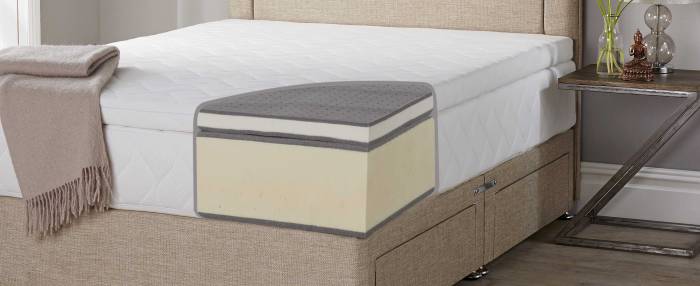
- What is a latex mattress?
- Differences between latex mattresses
- Latex bed types explained
- Two types of latex mattress construction
- Benefits of a latex mattress
- One or two sided latex mattresses explained
- Latex mattresses & fire retardancy
- Should I choose Dunlop or Talalay Latex?
What is a Latex Mattress?
A traditional Latex mattress is usually made from a solid core of Natural Latex foam which is a plant extract. There are other Latex mattresses that use a pocket spring unit or a different foam base which you also need to consider. Natural Latex is the highest quality and the type you should ideally be looking for depending on your budget.
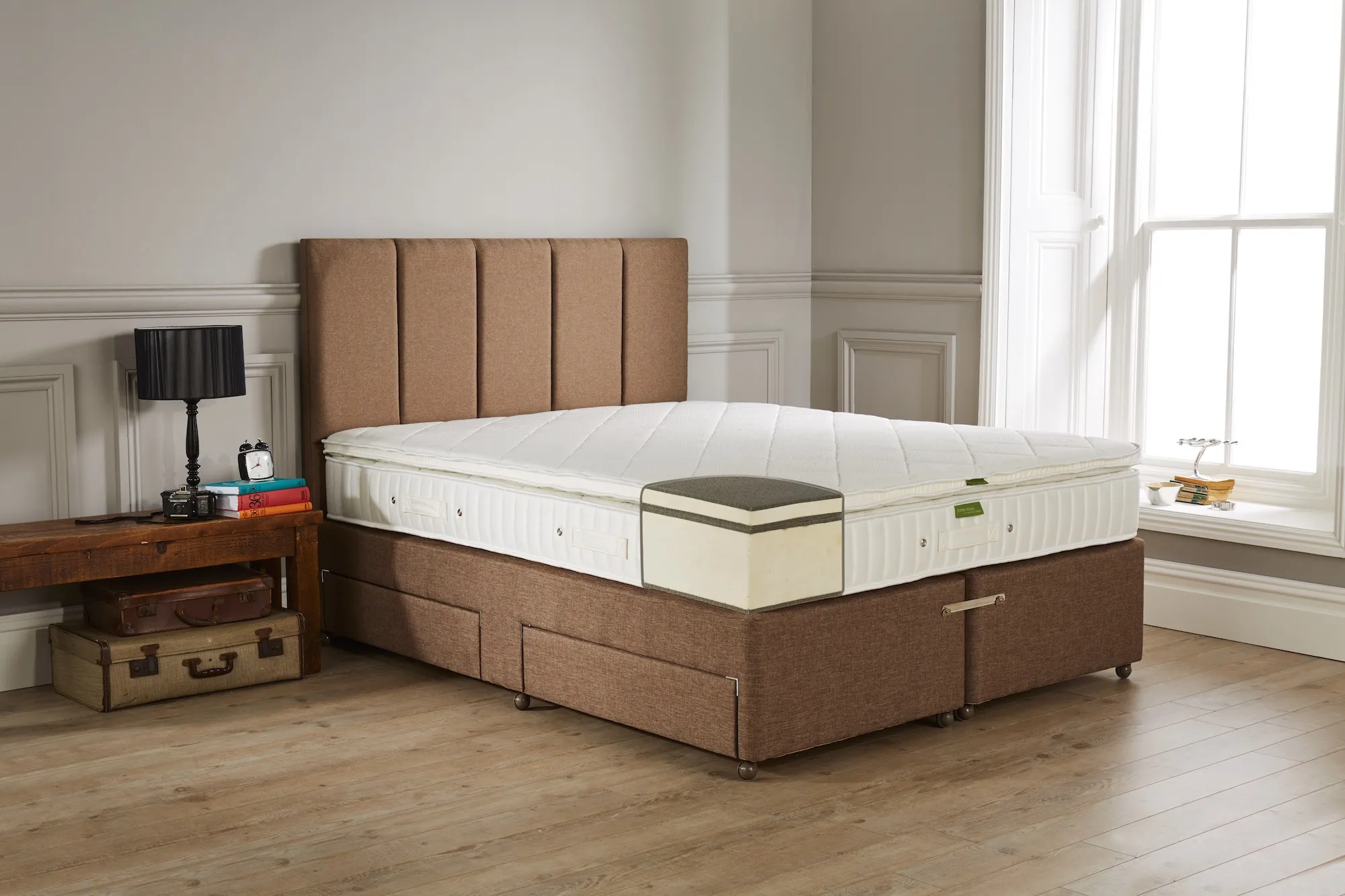
A solid latex mattress is made from one piece of latex foam that’s consistent all the way through. There’s no need for cheaper reflex support foams or springs, Latex itself is both the support and the comfort layer. They are wonderfully simple and highly effective mattress type for people with back or sports injuries as their progressive support is great for pressure points. Unlike memory foam, they don’t need heat to mould and also allow you to turn over quickly.
However, there are many other blends to consider meaning that latex mattress choices have become somewhat confusing. You may think you are getting a Natural Latex mattress but in reality, it is a synthetic version that should cost much less! Retailers are always looking to save costs so by mixing synthetic Latex with the higher end Natural Latex they can save money without you even realising.
What’s the difference between:
- Pure Latex?
- 100% Latex?
- Natural Latex?
They are not the same as 100% Natural Latex.
How can latex get any more confusing?
100% Natural Latex as a mattress component has not yet come down sufficiently in price to make it a common or easily found component of mattresses in retail shops and outlets. The cost price to manufacturers of this material is still rather high and will, of course, be reflected in the price. As viable alternatives, 100% Natural Latex is blended with other components to produce products that offer a slight compromise in quality but can, therefore, be offered at an acceptable price.
Latex Mattress Types Explained
- 100% Natural Latex (has about 2-4% forming additives 2-4% soaping agents and 90-96% Natural Latex)
- Natural Latex (has to contain at least 80% Natural Latex)
- Pure Latex (has to contain at least 20% Natural Latex)
To put this into some kind of perspective, these are the minimum quantities and in general Pure Latex used for mattresses will have at least 40% Natural Latex with the rest made up of synthetic latex and, the UK required, fire retardancy components.
Don’t be fooled by synthetic latex, if they don’t display the blend then walk away
Synthetic Latex is a man made chemical foam and not Latex at all
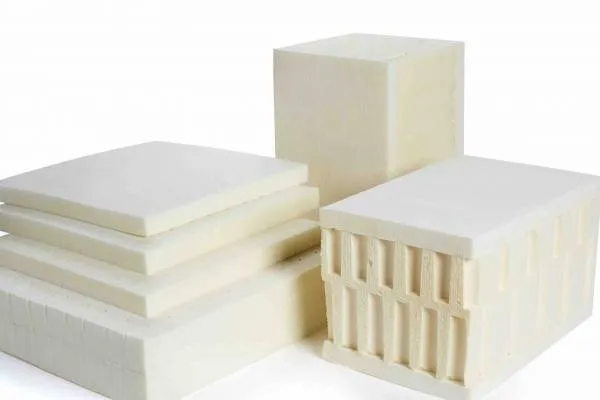
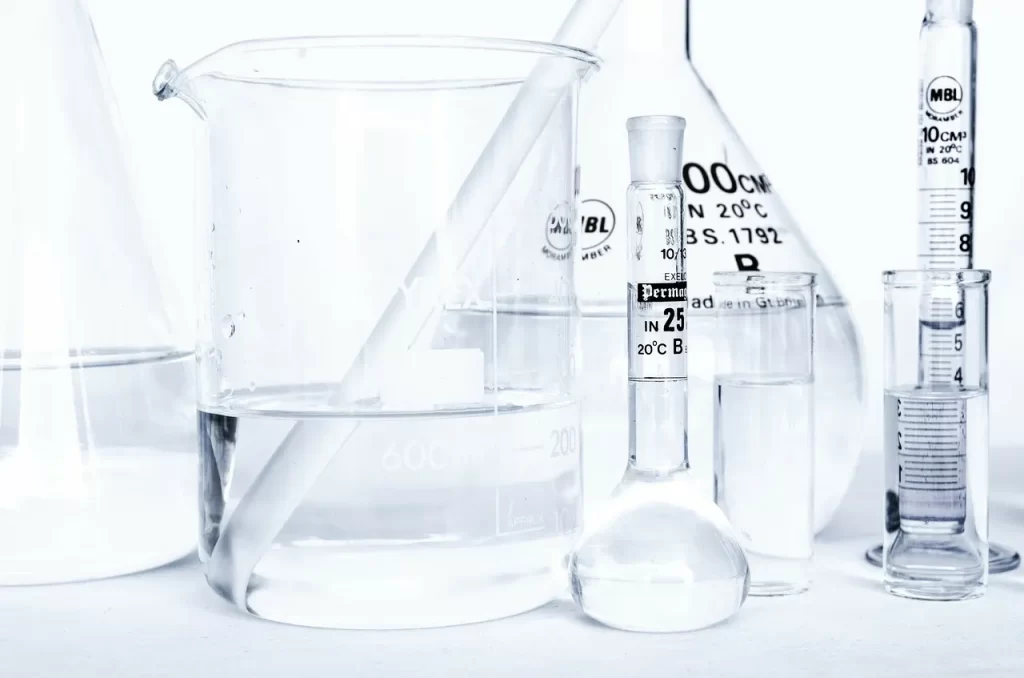
Latex Mattresses from John Ryan By Design
We use the following 2 latex types in our latex mattress range.
Personally, we wouldn’t worry too much initially about which latex manufacture method is used for the mattress deciding which is better is a little detail that has to be applied only when sorting out the wheat from the chaff.
There are not that many latex suppliers and the production quality is taken for granted to be of a very high standard. But then, who is to stop a rogue salesman telling you the latex contained in their mattress is 100% natural when in fact it isn’t. That should be where your concern lies.
Also as a forewarning, the actual depth and blend of latex used in your mattress should be more of a concern to you than whether it is pure or natural. Also, is the latex used as an entire sheet or is it placed just in the central area? If you are looking at Latex mattresses then these are the questions that just have to be asked.
Knowing the blend of latex, depth and density is essential
There are two ways that latex can be used in the construction of a mattress:
1. As a solid slab of latex
2. As a comfort layer generally on top of a pocket sprung system.
A mattress containing latex as a primary comfort layer will have to be at least 5cm to be beneficial. Your bodyweight has to sink into the material sufficiently leaving the underlying layer and/or pocket springs to offer up the additional support. When used in conjunction with reflex foam and/or other premium wadding on pocket springs then the emphasis will be made towards a comfort bias and the depth may well be just 2.5cm (1″).
The benefits of latex as a comfort layer
The popularity of latex is growing year on year as people realise the benefit this material has over memory foam and people would rather spend their money on a more durable and natural product over synthetic man made foams. Firstly, latex has an instant rebound property and recovers as soon as you move to a different area of the mattress. Whereas, in comparison, memory foam will retain the indent your body made until it cools down and recovers. Latex does not need to be warmed up by body heat to be effective and does not have the heat retentive properties of memory foam.
In short, latex is the perfect sleep surface. The lifespan of a premium 100% natural latex is deemed to be well in excess of 20 years. Even pure latex can easily be guaranteed for 10 years. Dunlopillo is credited somewhat to be the market leaders in latex mattresses but in recent times, they don’t disclose the blend of their latex leaving it open to scrutiny. However, many people will recognise the older Dunlopillo latex mattresses from yesteryear that were 100% natural latex.

One side or two sides?
When latex is used as a comfort layer it will more than likely be used on a non-turn one-sided mattress. The durability aspect of this component means that there really is no need to have it on a double sided, turnable mattress. Also, latex will never (normally) be used on a cage sprung mattress. Pocket springs or suspension springs will no doubt be the support system and all complimentary components will be premium. This is also true of the fabric covering. More often than not being entirely micro quilted polyester or a blend of poly/cotton with cashmere, silk or other extremely soft component. Latex for mattresses is manufactured to be cradling as well as supportive and so the fabric will be chosen to accentuate this property.
Our Fusion latex range of mattresses, however, are solid core 100% natural latex. This means they are two sided like any high-end, hand made, traditional mattress and can be turned and rotated as normal. They also come with a matching two-sided 100% natural latex topper to help protect your mattress and increase the comfort layer of latex.
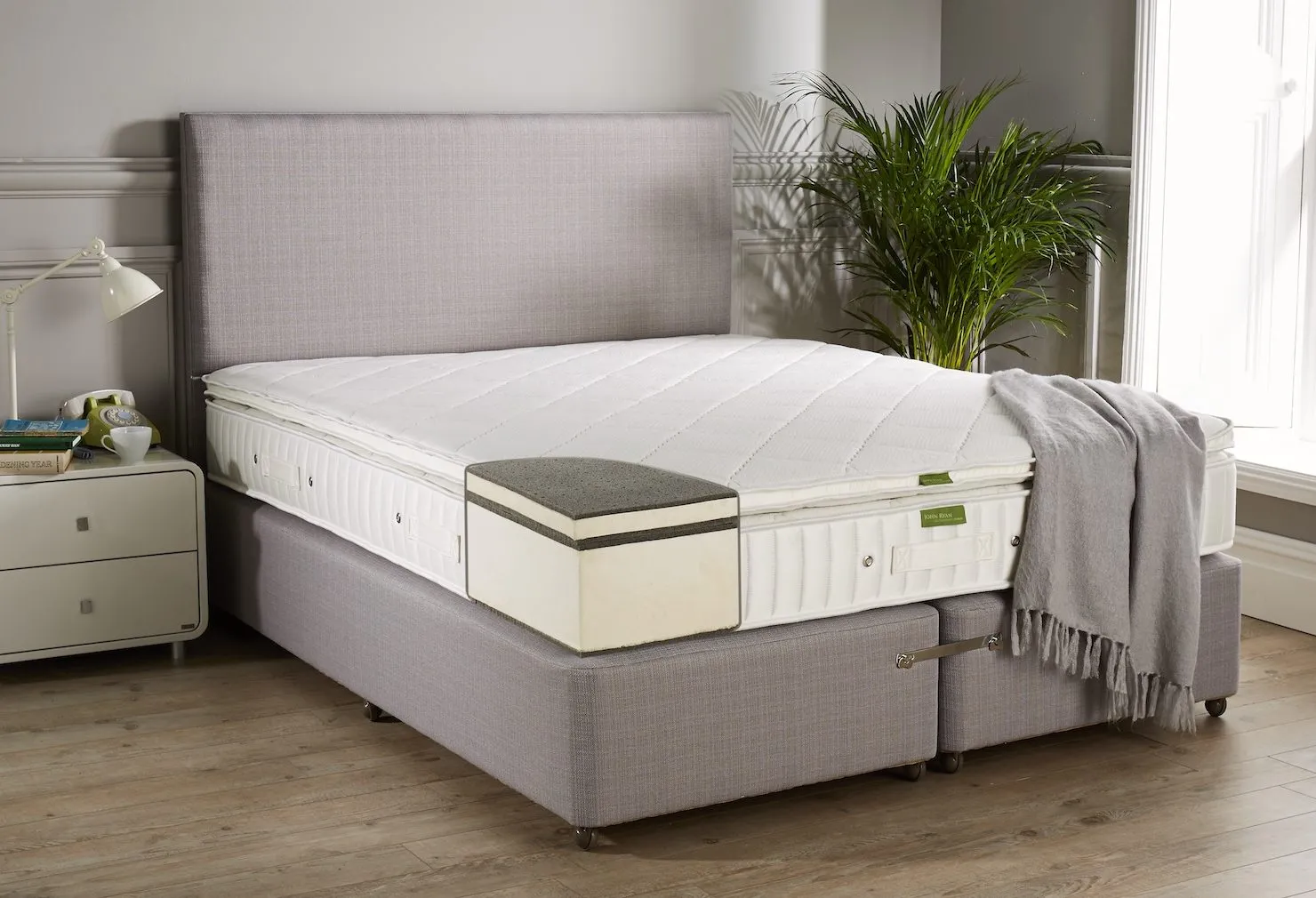
Latex mattress fire retardancy explained
It must be understood that only 100% natural latex without any other component apart from processing additives is the absolute best in terms of quality, but the price is usually the inhibitor. Aside from this, 100% natural latex is not naturally fire retardant and, therefore, it’s use in a mattress would be illegal unless a fire retardant outer layer was applied to the mattress.
Having natural or pure latex are the next two best options. Please see here for more detail on the fire retardant methods used in Latex mattress manufacture. At John Ryan, we use either wool casing or a graphite layer method over the chemical spray as this adds unnecessary chemicals to a natural product.
Graphite latex (pure latex) is a product used by the vast majority of mattress manufacturers as a viable compromise to natural latex. It has a high content of natural latex (at least 40%) and expandable graphite has to be added (hence making it a dark grey colour) to comply with fire retardancy regulations. There should be no significant difference in overall comfort when used as an FR layer. It is also an ideal component as a supportive internal layer when natural fillings are used as the primary layer.
What’s the difference between Talay and Dunlop latex?
There is huge detail around Talalay vs Dunlop with Latex and this is an area of specialism that we have written a post on here. Talalay is softer and more expensive whereas Dunlop is more progressive and slightly cheaper. We have a fully detailed article here giving you everything you need to know about these two types of latex.
Summary
The actual depth of the latex in your mattress is of vital importance. The best latex mattresses will be solid core, fully turnable. If your mattress contains a latex layer than you need at least 5cm depth to make sure you get the full benefits and lifespan of the latex. We, however, at John Ryan By Design, are one of the only current UK suppliers of 100% natural solid core latex mattresses. Our Fusion latex mattress range can be found in our shop here.
Need more help? Then call our small friendly team on 0161 437 4419.

Dreaming of the perfect nights sleep?

Ask us a question
There are over 6000 questions and answers submitted by you on all questions about mattresses and bed problems. Enter a keyword such as Vi Spring, John Lewis beds, bad back or Memory Foam and see if your question has already been answered.
If you can’t find an answer in knowledge hub, ask a new question. We aim to respond to all questions within one working day.
Newsletter
Enter your email to join our newsletter. We’ll send you occasional news and mattress expertise.
